Share this
5 Signs You Need a Roof Repair or Replacement
by Michael Wilhelm on Dec 14, 2022 8:53:36 PM
Here are 5 Signs That You Need To Have Your Roof Repair or Replaced:
- Leaks
- Interior Water Damage
- Damaged Shingles
- Compromised Roof Line
- Weather Damage – Hail, Wind, Falling Debris, Etc.
1. Leaks
Leaks are most often due to a damaged roof seal or damaged shingle. Leaks can be very obvious (with water coming into your home) or not obvious at all. Your roof might be leaking, and you don’t even know it. Water can slowly seep into your decking, insulation, or Oriented Strand Board (OSB) and may not show until the leak has been going on for a long time. By the time you notice a leak, the damage may be more extensive than you can see.
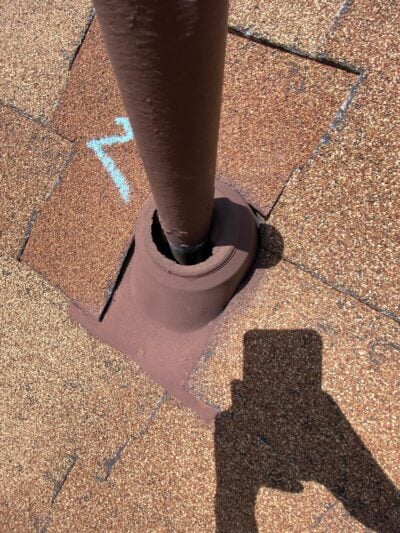
Deteriorated neoprene on pipe jack – potential leak point
2. Interior Water Damage
Interior water damage caused by a roof leak looks different than the damage caused by pipe leaks. Determining whether the internal water damage is from your roof can be relatively simple. Water damage from a roof leak most often occurs at the lowest point of your roof. The lowest point is usually in a valley at the eave of your roof.
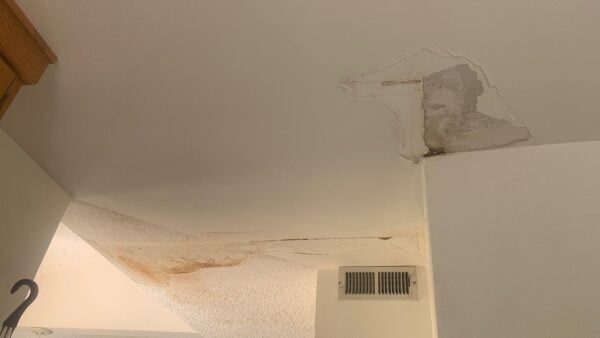
Example of severe internal water damage
3. Damaged Shingles
Damage to shingles can signify that you may need a roof replacement. Shingle damage can manifest itself in several ways, including granular loss, blistering of the shingles, unsealed shingles, issues with the manufacturing process, flaking, etc.
Granular Loss
Some granular loss is expected with new roofs because of how shingles are manufactured. A portion of the granules on asphalt shingles are not attached to the asphalt of the shingles, so some granular loss when the roof is first installed is normal. The loose granules will work themselves out of the shingles and wash into your gutters and down your downspouts. However, what is out of the ordinary is when you start to see an excess granular loss on an older roof. Granular loss on older roofs could mean that your shingles are deteriorating and may need to be replaced.
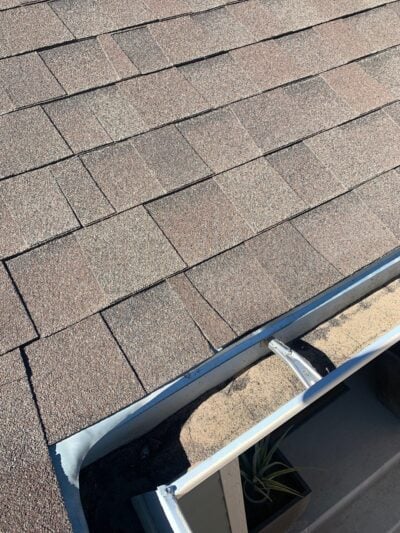
Severe granular loss on a five-year-old roof
Shingle Blistering
Roof blistering occurs when there is trapped moisture or air beneath the layers of roofing or within the shingles themselves. As the temperature outdoors continues to rise, the pressure in these patches forces the air or moisture to expand. The asphalt will begin to weaken, forming a blister on the surface of the roofing shingle. Shingle blistering can also occur from poorly ventilated roofs. If the roof is not ventilated appropriately, the heat can be too intense for the shingles and lead to blistering.
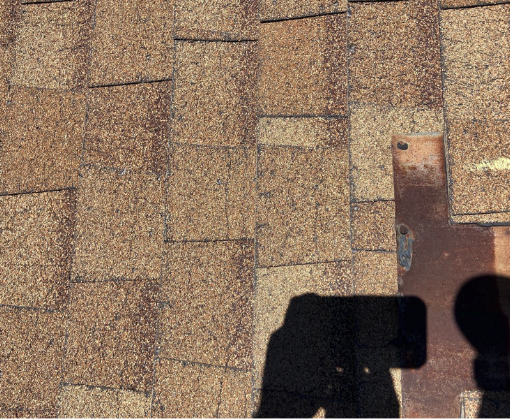
Shingle blistering on a 27-year-old roof
Unsealed Shingles
The bottom edge of all asphalt shingles has an asphaltic adhesive strip that seals the shingle from the weather. As the shingle heats up after it is installed, that adhesive strip heats up and bonds each shingle together to keep the shingle from flapping in windy conditions. However, as that adhesive strip deteriorates over time, the shingles can lift and become unsealed.
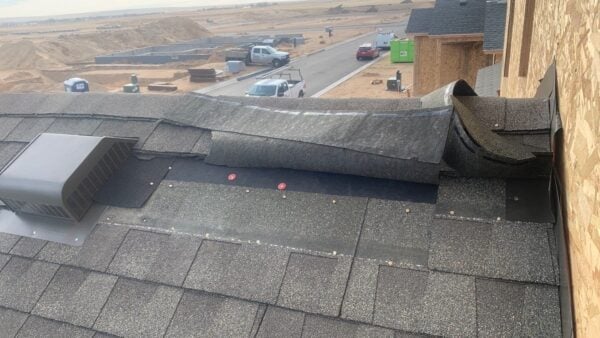
Unsealed and wind-damaged shingles
Shingle Flaking
Flaking is a term often used to describe localized shingle delamination. This localized delamination can either be caused by impurities in the asphalt coating or even anomalies or issues with the manufacturing process that creates weak points in the shingles themselves. If left unchecked, this flaking can severely damage the integrity of your roofing system.
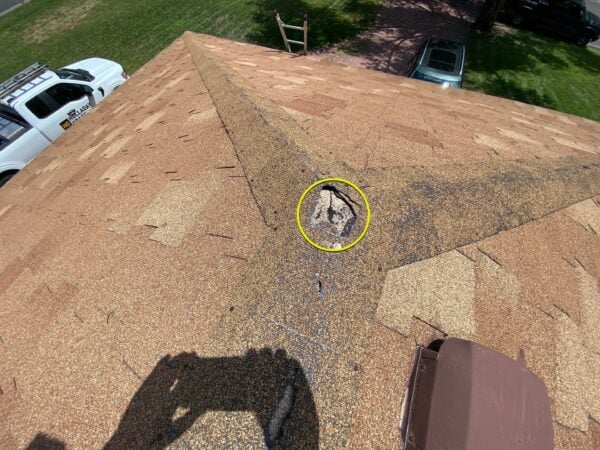
Shingle flaking on ridge shingles
Batch Problems
When shingles are produced, occasionally, there are issues with the batch that quality control may not catch before the bundle of shingles is delivered to the supplier and, ultimately, the customer. Batch problems that can compromise the shingles and cause them to need replacing can include all of the above-stated issues but most often have excessive granule loss or excessive blistering of the shingles.
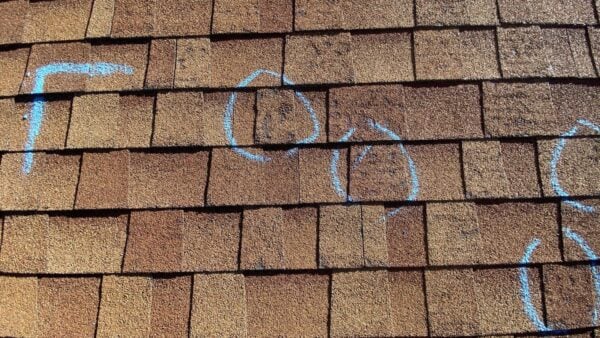
Batch Problem – Excessive Blistering
4. Compromised Roof Line
When you get a new roof installed, your roofline should be straight and square to each other and the house. When your roofline starts to bow and sag, it may be a sign to replace your roof. A compromised roofline could be an indication that you need to look at replacing your roof. Some causes of a compromised or sagging roofline include poor roof ventilation, roof installation when either the decking or underlayment still had moisture on/in it, or rotting decking.
5. Hail, Wind, Weather Damage, or Falling Debris
Hail
Hail damage can be difficult to spot but can be a big problem. Hail damage often looks like a divot in the shingle and can leave some areas bare where granules were knocked off the shingle. While no raised area around the divot may exist, the shingle itself will have granule loss and may be dented at the actual impact area. These dented areas will fail, causing leaks and even interior water damage to your home.
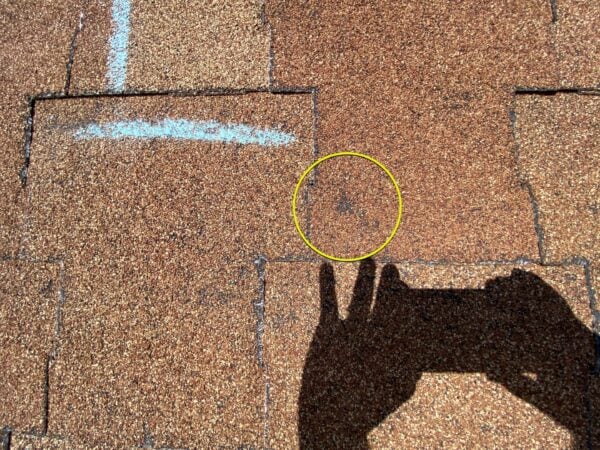
Hail damage
Wind
Wind damage occurs when the wind gets underneath the shingle. Even if the shingle is not fully blown off from the wind, damage to your shingles can still occur. What will usually happen is the wind will catch the underside of the shingle and bend it back, creating a crack that will ultimately result in a weak spot in the shingle. The shingle will eventually tear off if subjected to further wind while unsealed. Additionally, keep in mind that when the wind goes over your roof, it can double in speed as it goes up and over the ridge of your home. For example, if the weather report shows 30 mph winds, your roof could have sustained 60 mph as the wind went over your home.

Cracked shingles from wind damage
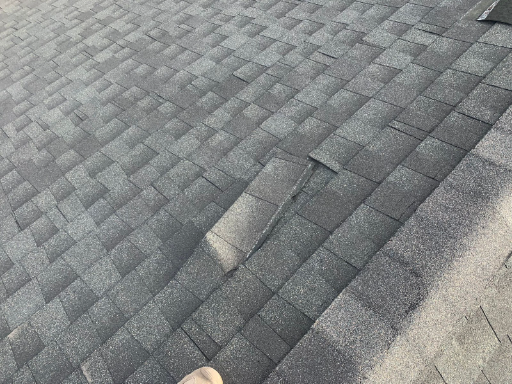
Torn shingles from wind damage
Weather Damage
Weather damage, similar to hail and wind damage, often occurs after severe weather events like a heavy wind or hail storm. With damaged shingles from a previous weather event, your roof will be more susceptible to weather damage moving forward. For example, wind-damaged shingles that are cracked or torn will be more likely to fail and cause leaks or damage to your underlayment. That damage to your underlayment can compromise your entire roofing system over time and could cost a great deal of money to repair if left unattended.
Falling Debris
Falling debris can be a big issue for your roof, depending on where you live. Areas that see large amounts of heavy wind can experience dislodged tree limbs that can damage your roofing system. Falling debris can damage the shingles on your roof, the decking, and possibly the roof trusses if the debris is large enough.
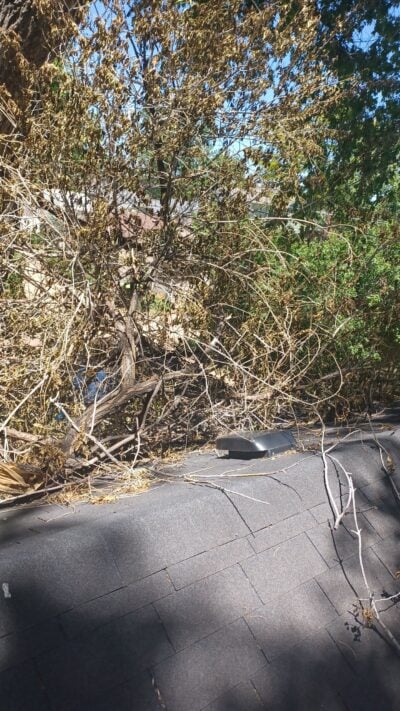
Roof damage from falling debris
If you see any of the above five signs on your roof, you should get a roof inspection to confirm your roof is sound. The sooner you get your roof inspected and fixed, the better. Ignoring a damaged roof can cost you more in the long run.
Since 1979, Holladay Grace has handled every project as if it were our home. Contact us for all your roofing needs if you’re local to the Colorado Springs community.



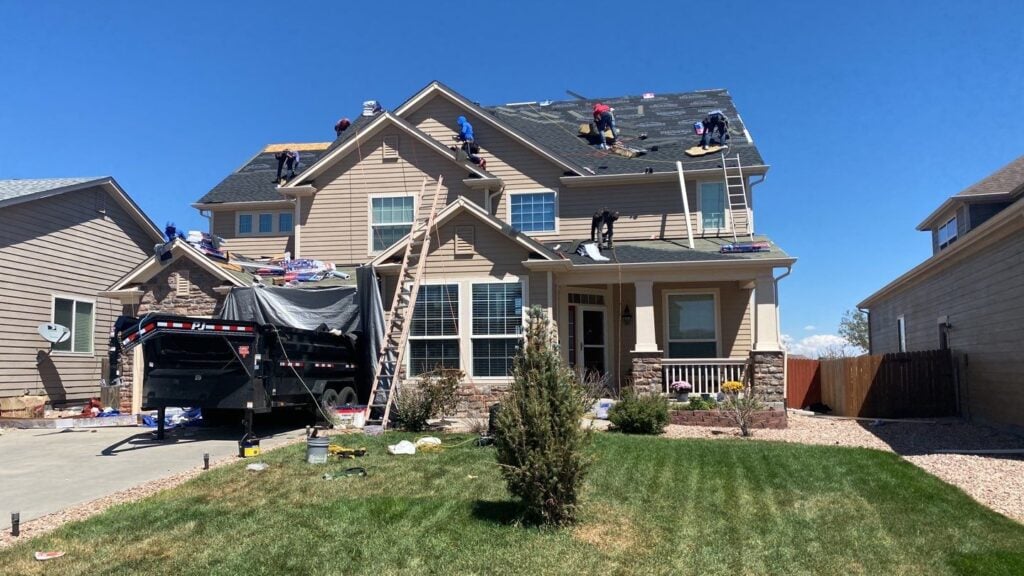
Comments (1)